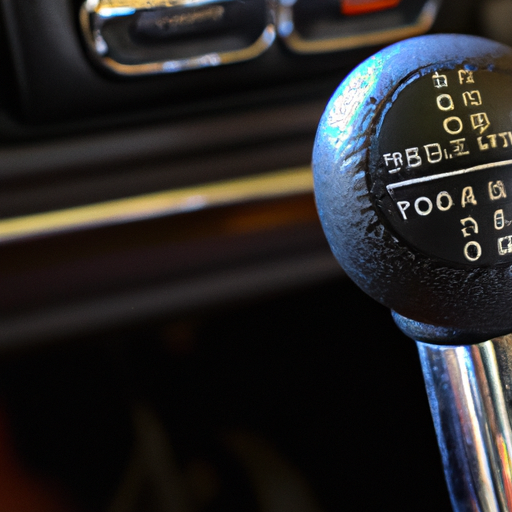Welcome to this article on 2017 F250 transmission problems. In this piece, you will learn about common issues that owners of the 2017 F250 may encounter with their transmission. We will look into specific symptoms, potential causes, and possible solutions for these problems. Whether you own this model or are considering purchasing one, this article aims to provide you with valuable information to help you better understand and address any transmission issues that may arise.


Overview of the 2017 F250 Transmission
The 2017 F250 is a powerful and highly capable truck, known for its impressive towing capacity and rugged durability. However, like any vehicle, it can experience transmission problems that can impact its performance and reliability. In this article, we will explore the common transmission problems faced by owners of the 2017 F250, the possible causes of these issues, their effects on the vehicle, and the various repair options available. We will also discuss preventative maintenance measures that can be taken to prolong the life of the transmission, as well as the warranty coverage and recalls associated with this model.
Common Transmission Problems
1. Gear Shifting Issues
One of the most common problems reported by owners of the 2017 F250 is difficulty in shifting gears. This can manifest as gears getting stuck, hesitation while shifting, or grinding noises. These issues can make it challenging to operate the vehicle smoothly and can even lead to safety concerns.
2. Transmission Fluid Leaks
Another prevalent problem in the 2017 F250 transmission is fluid leaks. Leaks can occur due to damaged seals, gaskets, or transmission pan, causing a loss of fluid. Low transmission fluid levels can lead to overheating, lack of lubrication, and ultimately, transmission failure if not addressed promptly.
3. Transmission Slipping
Transmission slipping is a problem characterized by the vehicle failing to maintain a consistent speed or RPM, even when the engine is revving higher. This can make it difficult to accelerate or maintain a steady pace while driving. Slipping can occur due to worn-out clutches, a malfunctioning torque converter, or other internal issues within the transmission.
4. Hard Shifting
Hard shifting refers to a jarring or jerky movement when shifting gears. This problem can be caused by various factors, including low transmission fluid, a faulty solenoid, or a malfunctioning valve body. Hard shifting can not only affect the ride quality, but it can also put additional stress on the transmission and other drivetrain components.
5. Transmission Overheating
Overheating is a serious issue that can lead to significant damage to the transmission and other parts of the vehicle. It can be caused by factors such as low transmission fluid levels, worn-out or damaged cooling system components, or excessive towing or hauling loads. Overheating can cause the transmission fluid to break down, leading to decreased lubrication and increased friction, ultimately resulting in transmission failure if not addressed promptly.
Causes of Transmission Problems
1. Manufacturing Defects
Some transmission problems in the 2017 F250 can be attributed to manufacturing defects. These defects can range from faulty components to design flaws. While manufacturers strive to produce vehicles of the highest quality, it is not uncommon for some individual units to have issues. If a manufacturing defect is identified as the cause of transmission problems, the manufacturer may offer solutions such as recalls or warranty coverage.
2. Insufficient Transmission Fluid
Low transmission fluid levels can cause a host of problems, including overheating, gear shifting issues, and transmission slipping. Insufficient fluid can be caused by leaks, inadequate maintenance, or other factors. Regular fluid checks and proper fluid levels are crucial for the optimal performance of the transmission.
3. Faulty Solenoids
Solenoids are electronically controlled valves that regulate the flow of transmission fluid and control gear shifting. If the solenoids become faulty, they can lead to gear shifting problems, transmission slipping, and other issues. Faulty solenoids can be caused by electrical issues, damage, or normal wear and tear.
4. Valve Body Malfunction
The valve body is a complex component that directs the flow of transmission fluid and controls gear shifting. If the valve body malfunctions, it can cause a range of problems, including hard shifting, slipping, and failure to engage or disengage gears properly. Valve body malfunction can be caused by wear and tear, fluid contamination, or other factors.
5. Overloading or Towing Excessive Loads
The 2017 F250 is designed to handle heavy loads, but overloading or towing excessive weights can put undue stress on the transmission. This can lead to overheating, increased wear and tear, and premature failure. It is important to adhere to the vehicle’s towing capacity guidelines and avoid exceeding the recommended weight limits.
Effects of Transmission Problems
1. Reduced Performance and Power
Transmission problems can significantly affect the overall performance and power of the 2017 F250. Gear shifting issues, slipping, and other problems can result in a loss of power and acceleration. This can be particularly noticeable when towing or hauling heavy loads, where the vehicle may struggle to maintain speed or climb hills.
2. Decreased Fuel Efficiency
Transmission problems can also impact fuel efficiency, resulting in increased fuel consumption. Hard shifting, slipping, and other issues can cause the engine to work harder and require more fuel to operate. This can be costly over time, especially for owners who regularly use their F250 for long drives or hauling purposes.
3. Increased Wear and Tear
When a transmission is not functioning properly, it can lead to increased wear and tear on various components. This can include the clutches, bands, gears, bearings, and other moving parts within the transmission. Increased wear and tear can shorten the lifespan of these components and require costly repairs or replacements.
4. Risk of Further Damage
Ignoring transmission problems can lead to more severe damage to the transmission or other parts of the vehicle. For example, a slipping transmission can cause excessive friction and heat, which can damage internal components. It is important to address transmission issues as soon as they arise to prevent further damage and costly repairs.
5. Safety Concerns
Transmission problems can also pose safety concerns. Issues such as gear shifting difficulties, hard shifting, or slipping can affect the vehicle’s ability to accelerate, maintain speed, or respond effectively to driver inputs. This can compromise the safety of the occupants and other road users. It is crucial to have transmission problems addressed promptly to ensure safe and reliable operation of the vehicle.


Diagnosing Transmission Problems
1. Check Engine Light
When a transmission problem arises, the first indication may be the illumination of the check engine light on the vehicle’s dashboard. The check engine light serves as a warning sign that a problem has been detected by the engine control unit (ECU). However, it is important to note that the check engine light can be triggered by various issues, and further diagnostics will be needed to pinpoint the exact transmission problem.
2. Transmission Fluid Inspection
Checking the transmission fluid is an essential step in diagnosing transmission problems. The fluid should be inspected for its color, level, and condition. Dark or burnt fluid, low levels, or the presence of metal particles can indicate underlying issues with the transmission.
3. Computerized Diagnostic Scan
Modern vehicles, including the 2017 F250, are equipped with onboard computers that can be used to perform diagnostic scans. These scans can retrieve error codes stored in the vehicle’s computer system, providing valuable information about the specific transmission problem. Computerized diagnostic scans are typically performed by professional mechanics using specialized equipment.
4. Road Testing
Road testing involves driving the vehicle to assess its performance and identify any issues with the transmission. This can include observing gear shifting behavior, acceleration, and response to driver inputs. A road test can be useful in identifying problems that may not be immediately apparent during visual inspections or diagnostic scans.
5. Professional Inspection
If the above steps do not provide a clear diagnosis, or if the problem persists despite attempts at repair, it may be necessary to seek the expertise of a professional mechanic or transmission specialist. These professionals have the knowledge, experience, and specialized equipment to conduct a thorough inspection of the transmission and identify any underlying issues accurately.
Repair Options for Transmission Problems
1. Transmission Fluid Flush
A transmission fluid flush involves draining the old transmission fluid and replacing it with fresh fluid. This can help remove contaminants and debris that may be contributing to transmission problems. A fluid flush should be performed according to the manufacturer’s recommended service intervals or as advised by a professional.
2. Transmission Fluid and Filter Replacement
In addition to a fluid flush, the transmission filter may also need to be replaced if it is clogged or damaged. The filter helps remove impurities and debris from the transmission fluid. Replacing the filter along with the fluid can improve the performance and prolong the life of the transmission.
3. Transmission Repair or Rebuild
In cases where the transmission has significant internal damage or mechanical issues, repair or rebuild may be necessary. This involves disassembling the transmission, repairing or replacing the damaged components, and reassembling the transmission. Transmission repairs or rebuilds should be performed by experienced professionals or transmission specialists.
4. Replacement of Faulty Components
If a specific faulty component is identified as the cause of the transmission problem, such as a solenoid or the valve body, it may be necessary to replace the component. This can be a more cost-effective solution than a full transmission rebuild or replacement. Components should be replaced with high-quality parts to ensure proper functioning and longevity.
5. Seeking Professional Help
When faced with transmission problems, it is generally recommended to seek professional help. Professional mechanics or transmission specialists have the knowledge, diagnostic tools, and experience to accurately diagnose and repair transmission issues. Attempting DIY repairs without proper expertise can lead to further damage and costly repairs down the line.


Preventative Maintenance for the Transmission
1. Regular Fluid Checks and Changes
Regularly checking and changing the transmission fluid according to the manufacturer’s recommended intervals is essential for maintaining a healthy transmission. Clean fluid helps lubricate and cool the transmission, preventing overheating and premature wear. It is important to use the recommended type and quality of fluid as specified by the manufacturer.
2. Proper Transmission Maintenance Schedule
Following the recommended maintenance schedule for the 2017 F250 is crucial for preventing transmission problems. This includes regular inspections, fluid changes, filter replacements, and other maintenance tasks. Adhering to the manufacturer’s guidelines can help identify potential issues before they become major problems.
3. Avoiding Overloading or Overworking the Transmission
Exceeding the recommended towing or payload capacity of the 2017 F250 can put excessive strain on the transmission. This can lead to overheating, increased wear and tear, and premature failure. It is important to follow the vehicle’s towing and payload guidelines and avoid overloading or overworking the transmission.
4. Temperature Management
Managing the transmission temperature is important to prevent overheating and subsequent damage. This can be achieved by ensuring proper functioning of the cooling system, avoiding excessive idling or stop-and-go driving, and using additional transmission coolers for heavy towing or hauling applications. Regular inspections of the cooling system components, such as the radiator and transmission cooler, are vital to prevent overheating.
5. Professional Inspections
Regular professional inspections of the transmission can help identify potential issues before they develop into major problems. Taking the vehicle to a trusted mechanic or transmission specialist for routine maintenance and inspections can help catch minor issues early on and save you from costly repairs in the future.
Warranty Coverage for Transmission Problems
1. Manufacturer Warranty
The 2017 F250 may come with a manufacturer’s warranty that covers specific transmission issues within a specified time or mileage limit. Manufacturer warranties typically provide coverage for defects in materials or workmanship that cause transmission problems. It is important to review the terms and conditions of the warranty to understand what is covered and any limitations or exclusions.
2. Extended Warranty Options
Extended warranty options may be available for the 2017 F250, which can provide additional coverage beyond the manufacturer’s warranty. Extended warranties can be purchased at the time of vehicle purchase or later on. It is important to carefully review the terms, coverage, and exclusions of any extended warranty options to ensure they meet your specific needs.
3. Limitations and Exclusions
It is important to note that warranties typically have limitations and exclusions. These can include restrictions on mileage, normal wear and tear, improper maintenance, and modifications made to the vehicle. Understanding these limitations is crucial to avoid voiding the warranty or being denied coverage for transmission problems.
4. Process for Warranty Claims
In the event of a transmission problem covered by a warranty, it is important to follow the manufacturer’s specified process for warranty claims. This may involve contacting the manufacturer’s customer support, providing documentation of the issue, and having the vehicle inspected and repaired by an authorized service center. It is important to keep all records and documentation related to warranty claims for future reference.
5. Contacting Customer Support
If you experience transmission problems with your 2017 F250, it is advisable to contact the manufacturer’s customer support for assistance. They can provide guidance on warranty coverage, recommended repair options, and any recalls or technical service bulletins related to your specific model and transmission issues. Maintaining open communication with customer support can help ensure a smooth resolution to any transmission problems.


Recalls and Technical Service Bulletins
1. Relevant Recalls for 2017 F250 Transmission
Recalls are issued by manufacturers when they identify safety-related defects or issues that can affect the performance or reliability of a vehicle. It is important to stay informed about any recalls that may affect the transmission of the 2017 F250. Recalls typically involve free repairs or replacements of the affected parts by an authorized service center. Checking the manufacturer’s website, contacting customer support, or consulting with a trusted mechanic can help identify any relevant recalls.
2. Technical Service Bulletins for Common Issues
Technical Service Bulletins (TSBs) are issued by manufacturers to provide information and guidance on specific issues or potential problems identified in their vehicles. TSBs may not be safety-related like recalls, but they can provide valuable insight into common transmission issues and recommended repair procedures. Checking for TSBs related to the 2017 F250 transmission can help guide diagnostics and repairs.
3. Checking for Updates and Notifications
Manufacturers often provide a platform for owners to check for updates and notifications regarding their specific vehicles. This can include recalls, TSBs, maintenance reminders, and other important information. Keeping your contact information up to date with the manufacturer can ensure you receive timely notifications regarding transmission-related updates.
4. Obtaining Repairs for Recalled Parts
If your 2017 F250 is affected by a recall related to the transmission, it is important to follow the manufacturer’s instructions for obtaining the necessary repairs. This typically involves contacting an authorized service center, scheduling an appointment, and having the repairs performed free of charge. Retaining all receipts and documentation related to recalls can be essential for future reference.
5. Reporting Safety Concerns
If you encounter a safety concern or believe there is a potential defect in your 2017 F250 transmission that has not yet been addressed through a recall or TSB, it is important to report this to the manufacturer. By reporting safety concerns, you can help raise awareness of potential problems and contribute to the safety of other vehicle owners.
Conclusion
In conclusion, the 2017 F250 may experience transmission problems that can impact its performance and reliability. Common issues include gear shifting problems, transmission fluid leaks, slipping, hard shifting, and overheating. These problems can be caused by various factors, including manufacturing defects, low fluid levels, faulty solenoids, valve body malfunctions, or overloading the transmission. These transmission problems can lead to reduced performance and power, decreased fuel efficiency, increased wear and tear, risk of further damage, and safety concerns. It is vital to diagnose transmission issues through methods such as checking the engine light, inspecting transmission fluid, conducting diagnostic scans, road testing, and seeking professional inspections. Repair options can include fluid flushes, fluid and filter replacements, transmission repairs or rebuilds, component replacements, and professional help. Preventative maintenance measures such as regular fluid checks and changes, proper maintenance schedules, avoiding overloading, temperature management, and professional inspections can help prolong the life of the transmission. Warranty coverage and recalls must be considered, and it is essential to follow the manufacturer’s process for warranty claims and stay informed about updates and notifications. By addressing transmission problems promptly, adhering to recommended maintenance, and staying informed about recalls and updates, you can ensure the 2017 F250’s transmission operates reliably and safely for years to come.


